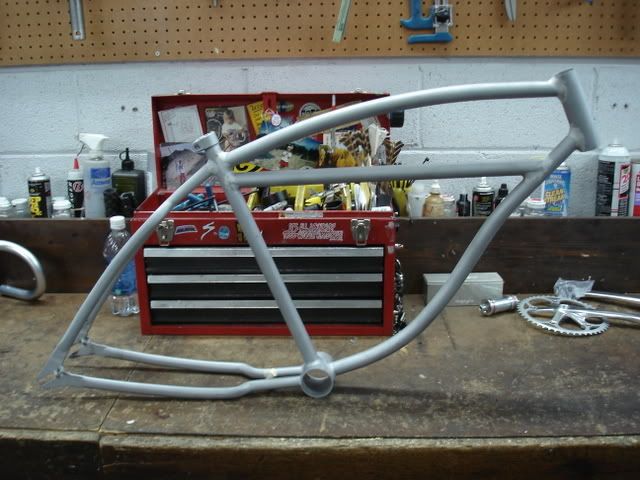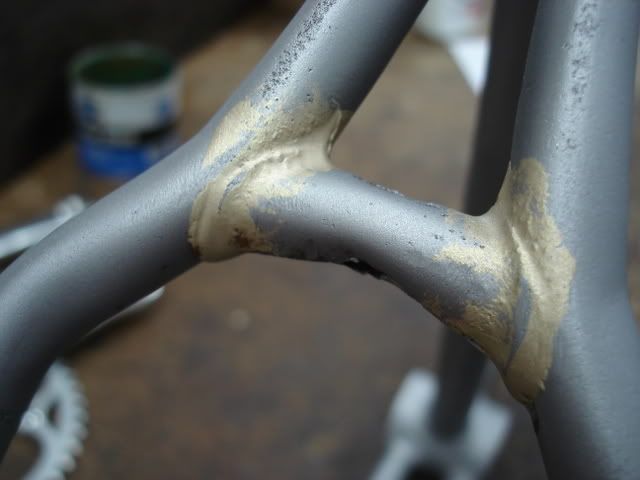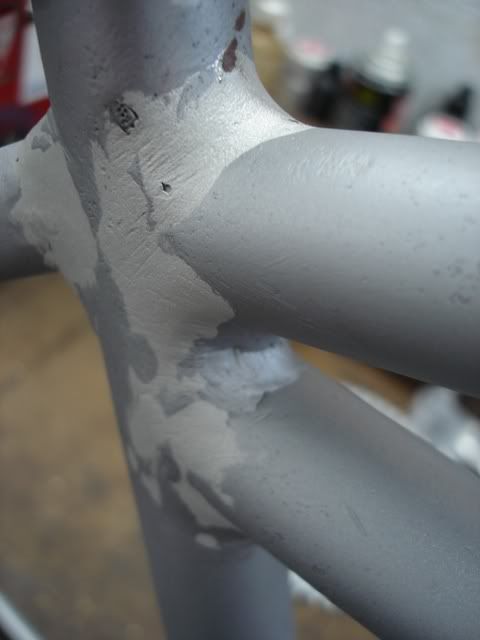You are using an out of date browser. It may not display this or other websites correctly.
You should upgrade or use an alternative browser.
You should upgrade or use an alternative browser.
schwinn brazing question
- Thread starter Bendix
- Start date

Help Support Rat Rod Bikes Bicycle Forum:
This site may earn a commission from merchant affiliate
links, including eBay, Amazon, and others.
I have noticed that there is a period in bicycle manufacturing where they were just getting into welding electrically and i think some of it they welded and some of it the brazed. some of it might be lead where they smoothed out the welds,but i would think the sand blaster would have taken lead out. just guessing on that.
you guys aren't thinking, if it was lead or bondo filler, it wouldn't be there after blasting, so it is weld, only thing that would be hard enough to withstand blasting I think, I might be wrong, but doubt it
maybe tin/lead? or just plain tin? :| i racked my brain of all the metals it could be, and i REALLY don think its silver. copper, no. thats all i got is tin.( :lol: )

$19.99
Electra Glide Wall Decal 2ft Long Sport Harley Davidson Bike Motorcylce Sticker Man Cave Garage Boys Room Decor
FatCat Wall Graphics

$236.22
$249.99
Schwinn Shuffle Adult Scooter, 26-Inch Front Wheel, 20-Inch Rear Wheel, Alloy Linear Pull Brakes, Steel Frame, Grey
Amazon.com

$412.30
$489.99
Schwinn Loop Adult Folding Bike for Men and Women, 20-inch Wheels, 7-Speed Drivetrain, Rear Cargo Rack, Carrying Bag, Silver
Amazon.com
In the old days they didnt have bondo so on cars and bikes and anything metal ... they brazed the stuff together and then went over it with melted lead they had in buckets and smoothed it out with wooden paddles. Was hitec for the time. All cars had all the seams leaded....lost art.
Hey Uncle Stretch have you ever done the lead filler deal? I was woundering if it is easier to use than bondo seams to me like it would make a nicer fix
Maddog its a very arcaic process that takes a special touch. You have to use a bar of lead and a torch. the putting it on is right about the same heat you warp thin body panels. then as you reheat it you smooth it out with the paddles. seen it done ...but ill stick with bondo. :wink: I have never caught anything on fire with a can of bondo.
Ya lead is not healthy, but it is healthy for my paycheck sometimes i score a job where we have to incapsalate the lead base paint in old houses so people can get a loan on it. I guess to many kids where chewing on the trim and walls making them kinda stupid.Rat Rod said:And you know handling large quantities of melting lead has to be good for your health....ha ha.
However i think it would be kinda cool to learn the lead filler deal, but i dont think i have enough brain cells to loose :mrgreen:
Uncle Stretch said:In the old days they didnt have bondo so on cars and bikes and anything metal ... they brazed the stuff together and then went over it with melted lead they had in buckets and smoothed it out with wooden paddles. Was hitec for the time. All cars had all the seams leaded....lost art.
good, i'm not crazy after all..... i figured lead as a filler with smaller welds underneath made the most sense. i remember seeing them doing a little lead work on a hot rod show a while back. pretty neat when done with care! i hope all the stuff i learn here doesn't push out the stuff i already know. i'd hate to forget my pin number or something.....
maddogrider said:Ya lead is not healthy, but it is healthy for my paycheck sometimes i score a job where we have to incapsalate the lead base paint in old houses so people can get a loan on it. I guess to many kids where chewing on the trim and walls making them kinda stupid.Rat Rod said:And you know handling large quantities of melting lead has to be good for your health....ha ha.
However i think it would be kinda cool to learn the lead filler deal, but i dont think i have enough brain cells to loose :mrgreen:
eating paint never hurt me n-n-n-none.......
Honey why does little Bendix just sit there and stair at us shouldnt he be talking by now? :mrgreen:
Will you quit chewing on the trim!
Will you quit chewing on the trim!
Ran across some info regarding this frame. Schwinn used lead to smooth the welds back then.
From Sheldon's site.
http://www.sheldonbrown.com/schwinn-braze.html#id
If you have a bare frame, the material joining the tubes is a clue:
- Gold colored brass means you have a fillet-brazed model
- Soft grey lead over brass means you have an early fillet-brazed model from the 1930's and '40's. (A real collector's item!)
From Sheldon's site.
http://www.sheldonbrown.com/schwinn-braze.html#id
If you have a bare frame, the material joining the tubes is a clue:
- Gold colored brass means you have a fillet-brazed model
- Soft grey lead over brass means you have an early fillet-brazed model from the 1930's and '40's. (A real collector's item!)





























































